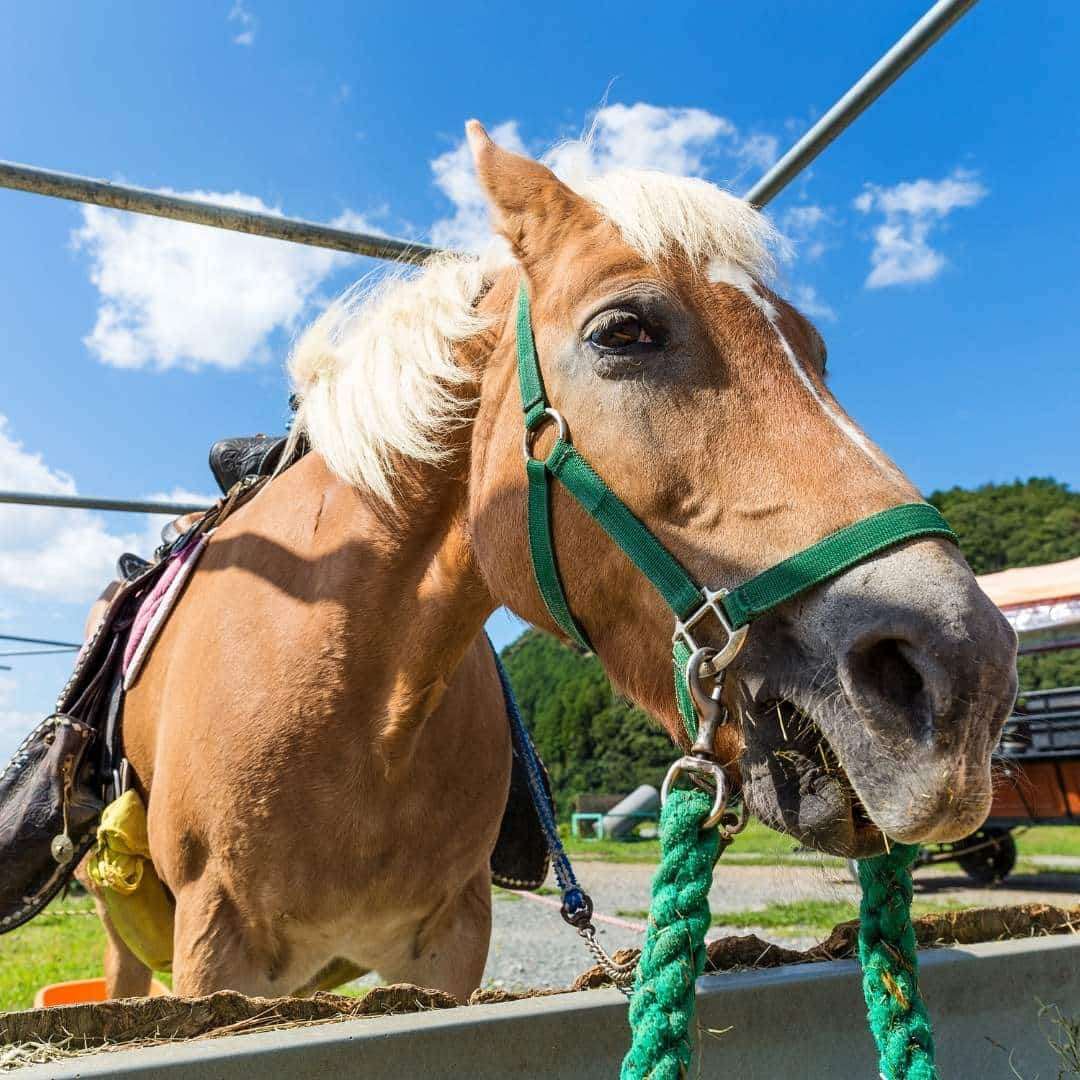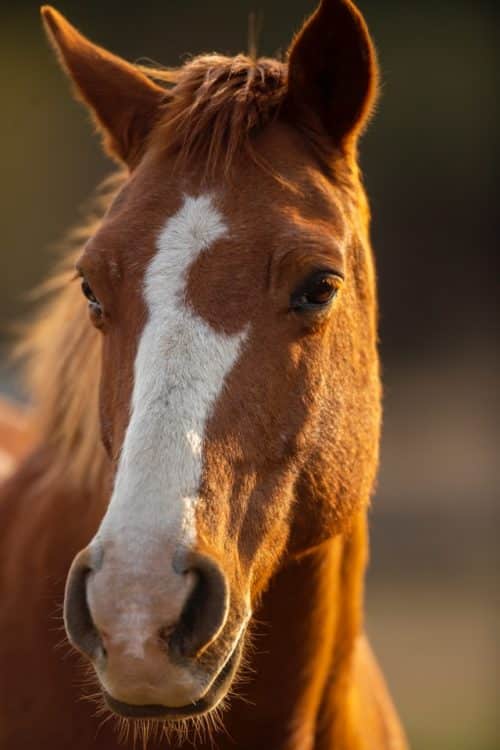Being a horse owner is not easy, especially during the summer when insects are at their best. During this time, a small mistake like forgetting to shut the lid on your feed barrel can get you into trouble.
In the summer, when fly and insect populations are at their peak, protecting your horse from flies and other biting insects becomes even more critical. But we’ve got your back. All the tips that can help you survive this problem are listed below. Continue reading to know more.
How to protect horses from insects?

Protective outerwear
There is a pretty obvious solution from insects. Nowadays, protective outerwear is very easy to find, and they do what they say. Flies fly around the horse’s head, landing on the eyes to drink the fluid that gathers in the corners.
Because flies carry bacteria, they frequently transmit disease or illness during this process but avoid it by wearing a flysheet.
On sweltering days, UV rays can be harmful to your horse, so using a flysheet might solve that problem as well as keep insects at bay. You can easily find the best fly sheets for horses online.
Fly rugs are another profitable way to protect your horse from fly and pest bites. They’re usually light and reflective to deflect sunlight and keep your horse comfortable even in the hottest months.
With these rugs, the mesh outer layer ensures that most of the heat is reflected away from your horse, shielding them from both insects and the sun. The fly rug is designed to be pleasant and relaxing to wear while also effectively covering the body to prevent flies and insects from infiltrating and biting your horse.
Vaccinate
Occasionally, if your horse is not vaccinated, it can be more prone to insects. So if you are struggling with keeping insects away from your horse, this might be the reason. The solution is straightforward. Suppose you have horses who have not had their vaccines updated. Consult your equine veterinarian to ensure you haven’t missed any critical immunizations. Not just to protect from flies, getting your horse vaccinated protects your horse from many other diseases.
Even though rabies is uncommon in horses, it should not be neglected because the disease is always fatal to the animal that develops signs. Once a year, your horse should be vaccinated. Rabies is most commonly transferred by saliva when an infected animal attacks an uninfected animal. Depression, lack of appetite, poor coordination, immobility, and violent behavior are just a few of the symptoms seen by horses afflicted with rabies.
Fly repellents
In addition to the methods outlined above, fly repellents for your animals may be beneficial. Apply fly spray to your horse’s skin and coat before saddling up to ride or show. Because your horse won’t be troubled by flying insects, you’ll have a much more enjoyable ride. Repellent ointments are also effective, and they typically last longer than fly spray. It should also be applied to your horse’s sensitive places, such as the underside of the barrel, the chest, and under the jaw.
If you’re going to shower your horses this summer, be extra careful to protect the parts where you’ve trimmed their hair short, such as their ears. These are the places that need more attention while applying fly repellents.
Keep Ticks Away
Ticks are your horse’s worst enemy. Ticks alone can drain your horses’ essential nutrients and cause many fatal diseases. One of these diseases is Lyme disease. Lyme disease is spread in the United States by bacteria carried by deer ticks and black-legged ticks. Horses are particularly vulnerable to the disease.
There are no specific numbers on the number of horses afflicted because of the vague and varied clinical signs of Lyme disease, including weight reduction, limb impairment, general discomfort, low-grade fever, hypersensitivity to touch, and underperformance. It’s still possible to protect your horse against the disease by using a fly spray that’s been proved to work on ticks, mainly on the legs. Examine your horse daily and remove ticks manually if necessary.
Invite birds
This might seem a bit odd, but making your barn bird-friendly can keep it insect-free. As we know, birds prey on insects. They are so letting birds in will balance out the insects on your farm-especially insect-eating birds.
So, inviting insect-eating birds into your yard and barn area is a beautiful way to reduce the number of flying insects. As they dive and dart around the neighborhood gathering bugs, members of the swallow family can be a valuable benefit to a horse facility.
One adult barn swallow can ingest thousands of insects every day, which is equal to using a bug zapper, a far safer alternative to applying insecticides.
Tree swallows, violet-green swallows, bluebirds, barn swallows, cliff swallows and purple martins are some of the most common insect-eating birds found in North America. Swinging nest boxes designed specifically for the birds in your region might aid in nesting.
Violet-green swallows, for example, will use horse or dog hair as nesting material. Please consult your local Audubon Society, birding organization, extension office, wild bird store, or library for assistance identifying the insect-eating birds that live in your area and their nest box requirements.
Install Traps
Just as in your household, fly traps can be used in your barn too. Various cheap, non-toxic insect traps can be incredibly effective in lowering the number of flying insects on your farm. Sticky traps are inexpensive and easiest to use; flying insects come across them and become stuck. Flypaper or sticky tape can be hung from barn ceilings or over doorways.
The cheapest and easiest to use are probably the old-fashioned sticky strips (the coiled sort). Hang a bunch of them (at least ten) from your barn ceiling. Remove the old pieces of tape after they’re full of dead flies and replace them with new ones. To avoid catching human hair or swishing horsetails, choose these areas carefully.
Brightly colored sticky tubes, which can also be hung up, are another type of trap that attracts flies. These traps may or may not have an attractant (i.e., a scent used in the trap) that flies seek.
Keep Scavengers Away
To avoid these scavengers, clean up any spilled grain as soon as possible, and avoid places where wild creatures such as skunks and raccoons are abundant. Even though rabies can be contracted and spread by any mammal, these are the two most common carriers. Opossums will not contaminate hay, grain, or bedding if good horse-keeping standards are followed.
Keeping your water supply sterile is very important as well. Adding a few goldfish to your larger water containers is one way to ensure a clean water supply. Along with eliminating a small number of algae accumulated, the fish will also consume many mosquito larvae, preventing your mosquito population from growing. Many equine diseases are conveyed by mosquitos, as you may know, making mosquito control critical to your horses’ health.
Keeping the waste managed is very important as well. Because insects are attracted to dung, keep stalls and small turnouts as clean as possible. This will assist in keeping insects from congregating in certain regions. Keeping dung out of pastures is a practical approach to keep external and internal parasites at bay. If complete removal of waste isn’t possible, breaking up clumps of waste and exposing them to sunlight and other environmental conditions can help eliminate parasites.
Instant Treatment
Insect bites on your horse can’t always be avoided, so it’s critical to recognize the problem and treat it as soon as possible. You may now soothe and treat insect bites using a variety of lotions, ointments, and sprays.
These creams can be used even if your horse hasn’t been bitten but is itchy and agitated for any reason. It addresses symptoms of itchiness and discomfort from bites all in one.
The cream is simple to use and provides rapid-acting, soothing relief to help your horse cope with the pain. Bite therapy is a crucial consideration while attempting to safeguard your horse, as some bites can result in serious illnesses that have a significant influence on your horse’s health and well-being if left untreated.
Related: Reptiles, Bugs and Other Home Pets
To sum up
The most essential thing to remember while dealing with insects is to eliminate insect habitats where insects live and breed, such as dirt, dung, and stagnant water. After you’ve gotten these areas under control, use birds, bats, fly parasites, and non-insecticidal traps to go after insects.
You can also choose whether to apply a repellent or an insecticide-based spray on your horse if particular insects become an issue. With these tools in hand, you’ll have more options for the upcoming insect season, which means you won’t have to deal with as many pests, and you’ll be able to limit the usage of chemicals on your horse property.

